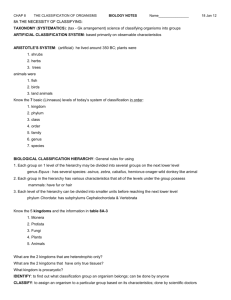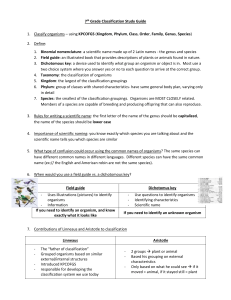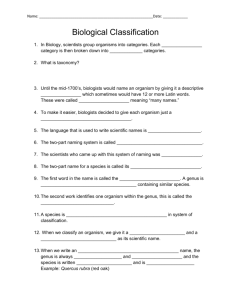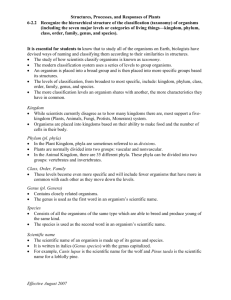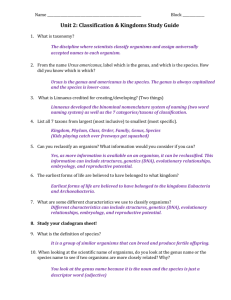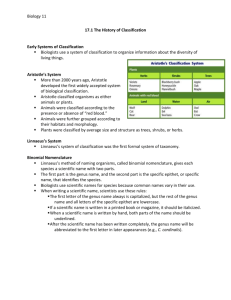History of Biological Classification: Aristotle to Darwin
advertisement
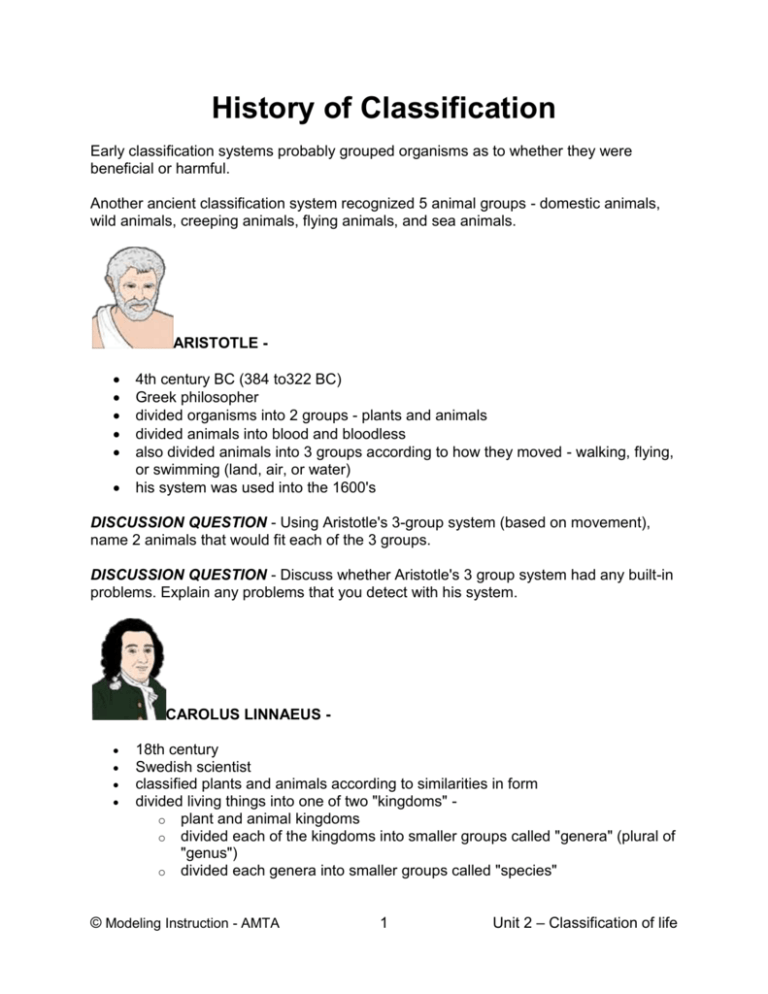
History of Classification Early classification systems probably grouped organisms as to whether they were beneficial or harmful. Another ancient classification system recognized 5 animal groups - domestic animals, wild animals, creeping animals, flying animals, and sea animals. ARISTOTLE 4th century BC (384 to322 BC) Greek philosopher divided organisms into 2 groups - plants and animals divided animals into blood and bloodless also divided animals into 3 groups according to how they moved - walking, flying, or swimming (land, air, or water) his system was used into the 1600's DISCUSSION QUESTION - Using Aristotle's 3-group system (based on movement), name 2 animals that would fit each of the 3 groups. DISCUSSION QUESTION - Discuss whether Aristotle's 3 group system had any built-in problems. Explain any problems that you detect with his system. CAROLUS LINNAEUS 18th century Swedish scientist classified plants and animals according to similarities in form divided living things into one of two "kingdoms" o plant and animal kingdoms o divided each of the kingdoms into smaller groups called "genera" (plural of "genus") o divided each genera into smaller groups called "species" © Modeling Instruction - AMTA 1 Unit 2 – Classification of life Designed a system of naming organisms called binomial ("two names") nomenclature ("system of naming") which gave each organism 2 names - genus (plural = genera) and species (plural = species) names. The genus and species names would be similar to your first and last names. Genus is always capitalized while species is never capitalized. To be written correctly, the scientific name must be either underlined or written in italics. His classification system is still used today; however, we use a 5 kingdom system (instead of 2 kingdom system.) Based on Carolus Linnaeus binomial nomenclature system, each organism is given a 2part scientific name. An organism may have more than one common name, but will only have one scientific name. For example - mountain lion, cougar and puma are all common names for the same animal. The name you decide to use probably depends on where you live. However, its scientific name is Felis concolor. Another example is the small, terrestrial crustacean which rolls up into a ball when disturbed. It is commonly known as an isopod, a pillbug, a sowbug, a roly-poly or a sow's ear. However. its scientific name is Armadillium vulgare. CHARLES DARWIN 18th-19th century English Naturalist All species of life have descended over time from common ancestry © Modeling Instruction - AMTA 2 Unit 2 – Classification of life As biologists came to accept the work of Charles Darwin in the second half of the 19th cent., they began to stress the significance of evolutionary relationships for classification. Although comparative anatomy remained of foremost importance, other evidence of relationship was sought as well. Paleontology provided fossil evidence of the common ancestry of various groups; embryology provided comparisons of early development in different species, an important clue to their relationships. In the 20th cent., evidence provided by genetics and physiology became increasingly important. Recently there has been much emphasis on the use of molecular genetics in taxonomy, as in the comparison of nucleic acid sequences in the genetic makeup of organisms. Computers are increasingly used to analyze data relevant to taxonomy. © Modeling Instruction - AMTA 3 Unit 2 – Classification of life

